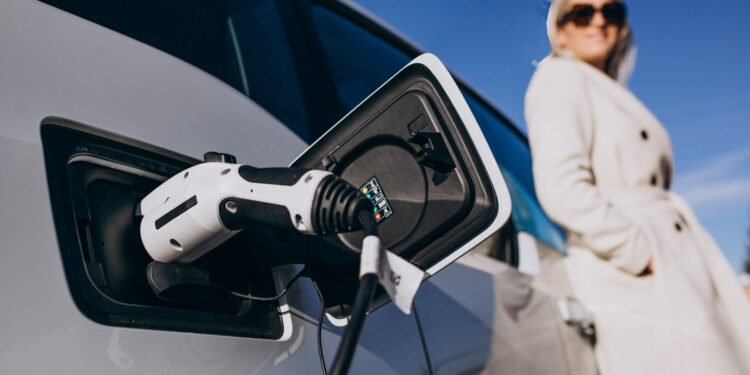The global transition to electric vehicles has created unprecedented volatility in the commodities markets, with battery materials experiencing dramatic price swings that have tested the nerves of investors, manufacturers, and industry analysts alike. Among these critical materials, nickel has emerged as a particularly fascinating case study, demonstrating both the extreme volatility that can characterize emerging technology markets and the underlying resilience of materials that serve essential functions in the clean energy transition.
The Great Nickel Squeeze of 2022
The nickel market experienced one of the most dramatic episodes in modern commodities trading history in March 2022, when a confrontation between two titans of the metals trading world created market conditions so extreme that they forced a fundamental rethinking of how critical materials are traded on global exchanges. This extraordinary event pitted Paul Singer of the prominent hedge fund Elliott against Xiang Guangda of Tsingshan, a Chinese nickel industry giant, in a battle over short positions that would ultimately reshape market perceptions of commodity trading risks.
The confrontation escalated with breathtaking speed, driving nickel prices to spike above $100,000 per tonne in a matter of minutes. This astronomical price level represented more than a ten-fold increase from typical trading ranges and created market conditions that threatened the stability of the entire nickel trading ecosystem. The speed and magnitude of this price movement highlighted the potential for extreme volatility in markets for materials critical to the energy transition, particularly when large institutional positions collide with supply constraints or market manipulation attempts.
The aftermath of this extraordinary trading episode was equally dramatic and far-reaching. Over $12 billion worth of trades were cancelled as exchange officials scrambled to maintain market integrity and prevent systemic damage to the global nickel trading infrastructure. The incident sparked numerous lawsuits as market participants sought to recover losses and assign responsibility for the extreme market disruption.
Perhaps most significantly, the episode forced the London Metal Exchange (LME), the world’s premier venue for industrial metals trading, to fundamentally rethink its approach to nickel trading. The exchange implemented new rules and safeguards designed to prevent similar extreme price movements in the future, while also reviewing its position limits and margin requirements to reduce the likelihood of market manipulation or excessive speculation.
Ground-Level Impact and Recovery
Despite the extraordinary drama and financial impact of the March 2022 nickel crisis, the actual effect on real-world nickel markets and electric vehicle production proved to be surprisingly short-lived and limited in scope. This disconnect between financial market volatility and industrial reality highlighted important differences between commodity trading markets and the underlying physical supply chains that actually deliver materials to manufacturers.
Nickel sulphate, the specific form of nickel used in electric vehicle battery production, did experience significant price increases during the crisis period, reaching more than $30,000 per tonne on a 100% nickel basis. However, these elevated prices proved temporary, and the market began a steady decline that has continued through the present day.
By the second quarter of this year, nickel sulphate prices had stabilized at an average of approximately $17,000 per tonne, representing a substantial decline from crisis peaks but still maintaining levels that support continued investment in nickel production and processing infrastructure. This price level appears to reflect a more sustainable balance between supply and demand fundamentals, stripped of the speculative excess that characterized the 2022 crisis period.
Comparative Performance: Nickel vs. Lithium
When examining the broader landscape of battery materials market performance, nickel investors have experienced relatively moderate volatility compared to their counterparts in the lithium market. This comparison provides important context for understanding the different risk and return profiles associated with various critical materials in the electric vehicle supply chain.
Lithium prices have experienced truly devastating declines since reaching extraordinary peaks less than three years ago. The trajectory of lithium pricing represents one of the most dramatic commodity market collapses in recent memory, with prices plummeting to $8,450 per tonne in June from above $80,000 in November 2022. This represents a decline of more than 89%, effectively wiping out nearly all of the gains that had accumulated during the initial electric vehicle investment boom.
The severity of the lithium price collapse reflects several factors, including aggressive capacity expansion by producers responding to earlier high prices, slower-than-expected electric vehicle adoption in some key markets, and the development of alternative battery chemistries that reduce lithium content per unit of battery capacity. These developments have created a significant oversupply situation in lithium markets that has persisted despite continued growth in electric vehicle sales.
In contrast, while nickel has certainly experienced significant volatility and price declines from peak levels, the magnitude of these movements has been far more manageable for investors and industry participants. This relative stability reflects nickel’s more diversified demand base, which includes significant non-battery applications in stainless steel production and other industrial uses that provide some buffering against electric vehicle market fluctuations.
Market Value Analysis: Nickel’s Competitive Position
Despite the challenges facing battery materials markets, recent analysis of actual deployment values reveals that nickel continues to maintain a competitive position within the electric vehicle ecosystem. Data from Toronto-based research consultants Adamas Intelligence provides crucial insights into the real-world economics of battery materials deployment in the global electric vehicle market.
The value of terminal lithium tonnes deployed in electric vehicles, including both plug-in hybrids and conventional hybrids, sold worldwide from January through May of this year totaled $2.15 billion. This figure represents the actual economic value of lithium consumption in vehicle batteries rather than theoretical market calculations, providing a more accurate picture of lithium’s role in the electric vehicle economy.
Remarkably, the corresponding figure for nickel deployment in electric vehicle batteries during the same period reached $2.20 billion, slightly exceeding lithium’s contribution despite the significant structural challenges facing nickel in the battery market. This $2.20 billion valuation demonstrates that nickel continues to play a crucial economic role in electric vehicle production, even as alternative battery chemistries gain market share.
The fact that nickel deployment value slightly exceeds lithium deployment value is particularly significant given the various headwinds that nickel faces in the battery market. These challenges include both the substantial decline in nickel prices from peak levels and the increasingly rapid adoption of nickel-free battery technologies that threaten to reduce nickel’s long-term role in electric vehicle applications.
The Rise of Lithium Iron Phosphate Technology
One of the most significant structural challenges facing nickel in the battery market comes from the rapid adoption of lithium iron phosphate (LFP) battery technology, which eliminates nickel entirely from the battery chemistry. This technological shift represents a fundamental change in battery manufacturing approaches and has important implications for long-term demand projections for nickel and other battery materials.
LFP batteries have experienced extraordinary growth in market share, approaching nearly half of all electric vehicle battery capacity deployed so far this year. This represents a dramatic transformation from the beginning of the decade, when LFP batteries accounted for less than 1% of electric vehicle battery capacity. The speed of this transition highlights how quickly technological preferences can shift in rapidly evolving markets like electric vehicles.
The growth of LFP technology reflects several important advantages that have made this chemistry increasingly attractive to electric vehicle manufacturers. LFP batteries typically offer lower costs than nickel-based alternatives, partly because they avoid the use of expensive materials like nickel and cobalt. They also provide enhanced safety characteristics, with lower risks of thermal runaway and battery fires compared to some nickel-based chemistries.
Additionally, LFP batteries have demonstrated excellent longevity characteristics, often providing more charge cycles before capacity degradation compared to alternative technologies. For applications where weight and energy density are less critical than cost and durability, such as urban delivery vehicles or stationary energy storage, LFP technology has proven particularly attractive.
However, LFP batteries also have limitations that prevent complete displacement of nickel-based technologies. Most notably, LFP batteries provide lower energy density, meaning they store less energy per unit of weight or volume compared to nickel-based alternatives. For applications where maximizing driving range is critical, such as long-distance passenger vehicles or commercial trucking, nickel-based batteries continue to offer important advantages.
Market Dynamics and Future Outlook
The current state of the nickel market reflects a complex interplay of factors that will likely continue to influence pricing and demand patterns in the coming years. On one hand, the continued growth of electric vehicle adoption provides a fundamental demand driver that supports long-term nickel consumption, even as market share shifts toward alternative battery chemistries.
The resilience demonstrated by nickel deployment values despite significant price declines and competitive pressure from LFP technology suggests that nickel-based batteries continue to serve important functions in the electric vehicle ecosystem. Premium vehicle segments, applications requiring maximum energy density, and markets where performance characteristics outweigh cost considerations continue to drive demand for nickel-based battery technologies.
However, the ongoing expansion of LFP market share presents a structural challenge that will likely continue to influence nickel demand projections. As LFP technology continues to improve and manufacturing costs decline further, the market segments where nickel-based batteries maintain clear advantages may continue to shrink.
The geographic distribution of electric vehicle markets also plays an important role in nickel demand patterns. Chinese manufacturers have been particularly aggressive in adopting LFP technology, driven partly by cost considerations and partly by strategic desires to reduce dependence on imported nickel and cobalt. In contrast, European and North American markets have shown more continued preference for nickel-based technologies, particularly in premium vehicle segments.
Investment Implications and Risk Assessment
For investors considering exposure to battery materials markets, the nickel sector presents a complex risk-return profile that requires careful analysis of both short-term market dynamics and long-term technological trends. The relative stability of nickel compared to lithium suggests that investors seeking exposure to electric vehicle growth may find nickel offers a more manageable volatility profile, though this stability comes with trade-offs in terms of growth potential.
The continued deployment value of nickel in electric vehicle applications, despite significant competitive pressure from alternative technologies, suggests that reports of nickel’s obsolescence in the battery market may be premature. However, investors must also recognize that the long-term trajectory for nickel demand will likely be influenced by the continued evolution of battery technology and the relative cost and performance characteristics of different chemistry options.
The experience of the March 2022 trading crisis also provides important lessons about the risks associated with commodities markets, particularly for materials that serve critical functions in emerging technology sectors. While the physical impact of that crisis proved limited, the financial market disruption demonstrated how quickly extreme volatility can emerge in markets where large institutional positions interact with supply constraints or speculation.
As the electric vehicle market continues to mature and battery technology continues to evolve, nickel’s role in the energy transition will likely continue to adapt. The current data suggesting continued economic relevance for nickel in electric vehicle applications provides reason for cautious optimism, but investors must remain attentive to technological developments and market share trends that could significantly alter demand projections in the years ahead.
Acknowledgment: This article was written with the help of AI, which also assisted in research, drafting, editing, and formatting this current version.







